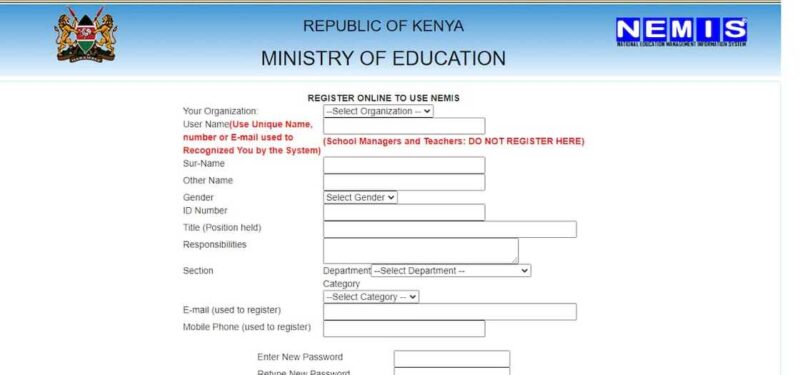School heads blame NEMIS system failures for enrolment mismatches after the Ministry of Education uncovers 87,000 ghost learners in a nationwide audit.
As Kenya confronts the shocking discovery of 87,000 ghost learners, school administrations are pushing back against blame, insisting that systemic failures within the National Education Management Information System (NEMIS) played a major role in creating the crisis.
The Ministry of Education identified thousands of irregular entries during the ongoing nationwide enrolment audit, prompting suspicions that some schools may have inflated numbers intentionally to receive more capitation. However, the Kenya Primary Schools Heads Association (Kepsha) says the issue is far more complex and should not be viewed simply as fraud by head teachers.
National chairman Fuad Ali said many schools routinely experienced discrepancies between the number of learners uploaded into NEMIS and the capitation funds eventually received. “There were system errors. Even when we uploaded accurate numbers, the system sometimes reflected fewer learners,” Ali explained. “These mistakes did not originate from head teachers.”
The shift from NEMIS to the Kenya Education Management Information System (KEMIS) has been hailed as a necessary correction to years of data mismanagement. Kepsha officials say KEMIS is more stable, secure, and reliable, giving schools renewed confidence in reporting accurate information.
Education CS Julius Ogamba acknowledged past data challenges but emphasized that deliberate manipulation also occurred, particularly in schools that presented unusually high discrepancies. He insisted that physical verification would ensure fairness, preventing innocent officers from being wrongfully accused.
The Ministry’s verification teams are now combing through records at schools with the largest data anomalies. Already, 10 schools with no learners have been identified, raising serious questions about data integrity and system oversight under NEMIS.
Basic Education PS Julius Bitok urged school heads to treat data verification with utmost seriousness ahead of next term’s capitation disbursements. “We want accurate numbers so that funds are allocated correctly. Verification will ensure schools receive their capitation on time,” Bitok said.
Despite pressure, Ogamba postponed releasing the final audit results for the fourth time, citing incomplete verification. He revealed that at least Sh1 billion remains unreleased because enrolment numbers in some schools are inconsistent. “We must correlate all data before taking action,” the CS said.
The unfolding scandal highlights Kenya’s long-standing struggle with education data, raising the need for modern, tamper-proof systems. As the Ministry transitions fully into KEMIS, many hope the new platform will finally end the chaos that allowed ghost learners to feed on public funds for years.






